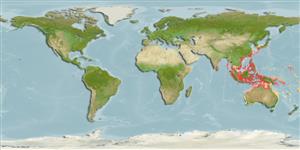Trophic ecology
Nahrungsorganismen
Diet compositions
Food consumptions
Food rations
Räuber
Ecology
Ökologie
Home ranges
Population dynamics
Growths
Max. ages / sizes
Length-weight rel.
Length-length rel.
Längenhäufigkeiten
Mass conversions
Recruitments
Abundances
Physiology
Body compositions
Nutrients
Oxygen consumptions
Swimming type
Swimming speeds
Visual pigment(s)
Fisch Laute
Diseases / Parasites
Toxicities (LC50s)
Genetics
Genetik
Electrophoreses
Heritabilities
